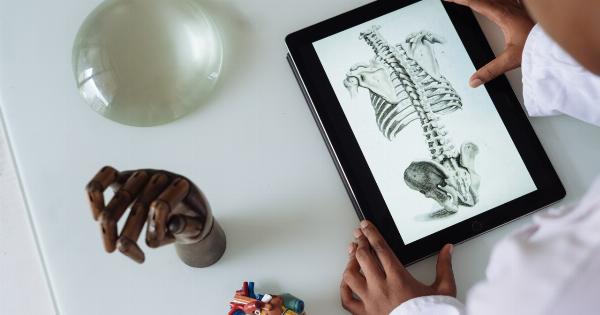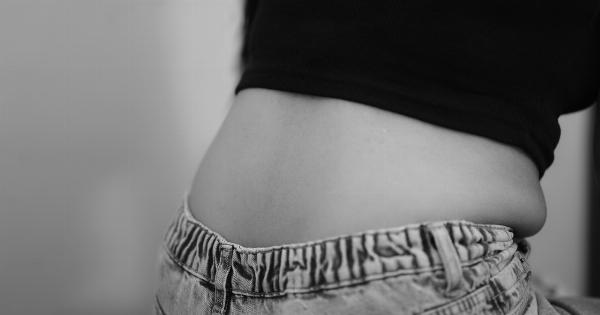Leaking urine, also known as urinary incontinence, is a condition that affects millions of people worldwide. It can cause embarrassment, discomfort, and a significant impact on the quality of life.
Understanding the causes of urine leakage is essential for proper diagnosis, treatment, and management of this condition. In this article, we will explore some of the common causes of urine leakage and the medical conditions that may contribute to it.
1. Stress Incontinence
Stress incontinence is one of the most prevalent forms of urinary incontinence, especially in women. It occurs when activities that put pressure on the bladder, such as coughing, sneezing, laughing, or exercising, lead to urine leakage.
The main cause of stress incontinence is weakened or damaged pelvic floor muscles that support the urethra and bladder. Pregnancy, childbirth, menopause, obesity, and certain medical conditions can contribute to the development of stress incontinence.
2. Urge Incontinence
Urge incontinence, also known as overactive bladder, is characterized by a sudden and intense urge to urinate, followed by involuntary urine leakage. It occurs due to the involuntary contraction of the bladder muscles.
Neurological conditions, such as stroke, Parkinson’s disease, multiple sclerosis, and bladder infections, can lead to urge incontinence. Certain medications, caffeine, alcohol, and bladder irritants may also contribute to this type of urine leakage.
3. Overflow Incontinence
Overflow incontinence occurs when the bladder is unable to empty completely, causing it to overflow and result in urine leakage. This condition is commonly seen in men with an enlarged prostate gland or individuals with bladder obstruction.
Diabetes, certain medications, nerve damage, and weak bladder muscles can also contribute to overflow incontinence.
4. Functional Incontinence
Functional incontinence typically occurs in individuals who have physical or cognitive impairments that hinder their ability to reach the restroom in time.
Conditions such as arthritis, Parkinson’s disease, Alzheimer’s disease, and physical disabilities can cause functional incontinence. The primary issue lies in the person’s inability to perform the necessary actions required to prevent urine leakage, rather than a problem with the urinary system itself.
5. Mixed Incontinence
Mixed incontinence is a combination of two or more types of urinary incontinence. It commonly involves a mix of stress incontinence and urge incontinence.
The causes of mixed incontinence can vary from individual to individual, but often include a combination of weakened pelvic floor muscles, bladder muscle dysfunction, and underlying medical conditions.
6. Pelvic Floor Muscle Weakening
The pelvic floor muscles play a vital role in supporting the bladder, urethra, and other pelvic organs. Weakness or damage to these muscles can lead to urine leakage.
Pregnancy, childbirth, hormonal changes during menopause, obesity, and aging can contribute to the weakening of pelvic floor muscles. Engaging in high-impact activities without proper pelvic floor muscle conditioning can also strain these muscles and cause urine leakage.
7. Hormonal Changes
Hormonal changes, particularly in women, can contribute to urine leakage. During menopause, the decline in estrogen levels can lead to weakening of the pelvic floor muscles and urethral tissues, resulting in stress incontinence.
Furthermore, hormonal fluctuations during pregnancy and childbirth can also contribute to urinary incontinence.
8. Urinary Tract Infections
Urinary tract infections (UTIs) can cause temporary episodes of urine leakage. The infection irritates the bladder and can lead to an urgent need to urinate, often followed by urine leakage.
Treating the underlying UTI is critical in managing and resolving the associated incontinence symptoms.
9. Neurological Disorders
Various neurological disorders can disrupt the normal functioning of the bladder and lead to urine leakage.
Conditions such as stroke, Parkinson’s disease, multiple sclerosis, and spinal cord injuries can affect the nerves that control bladder function. These disruptions can result in either urge incontinence or neurogenic bladder, which is characterized by impaired bladder control.
10. Medications
Some medications can have side effects that contribute to urine leakage. Diuretics, which increase urine production, may lead to more frequent urination and potential urine leakage.
Other drugs, such as alpha-blockers used to treat high blood pressure or antipsychotics used to manage certain mental health conditions, can affect bladder function and contribute to incontinence.
Treatment Options and Preventive Measures
The treatment options for urine leakage depend on the underlying cause and the severity of the condition.
In many cases, a combination of treatments and lifestyle modifications can significantly improve or even resolve the symptoms of urinary incontinence.
1. Lifestyle Modifications:.
Lifestyle changes can help manage urine leakage.
These may include maintaining a healthy weight, adopting a regular exercise routine that includes pelvic floor muscle exercises, managing fluid intake, avoiding bladder irritants such as caffeine and alcohol, and practicing good toilet habits.
2. Pelvic Floor Muscle Exercises:.
Strengthening the pelvic floor muscles can enhance urinary control and reduce urine leakage. Exercises such as Kegels, which involve contracting and relaxing the pelvic floor muscles, can be highly effective in improving muscle strength and control.
3. Medications:.
Depending on the type and underlying cause of urine leakage, medications may be prescribed. These medications can help relax the bladder muscles or tighten the urethral sphincter, improving control over urination.
4. Medical Devices:.
In some cases, medical devices such as pessaries, urethral inserts, or vaginal cones may be recommended to support the bladder and prevent urine leakage.
5. Surgery:.
If conservative treatments do not provide the desired results, surgical interventions may be considered.
Procedures such as bladder neck suspension, sling procedures, or artificial urinary sphincter placement can help improve urinary control and reduce urine leakage.
It is crucial to consult a healthcare professional for appropriate diagnosis and personalized treatment plans based on individual needs and medical history.































